
What Is Dividend?

A company raises funds by way of equity share capital from its shareholders. A dividend is a payment made by the company to its shareholder as a share of the profit earned during the financial year. Usually, some part of the profits earned by a company is retained for business purposes while a part is distributed to the shareholders.
What Are “Dividend Stocks”:
Stocks in companies that have an uninterrupted track record of distributing a large share of their profits are known as “dividend stocks”. Such stocks are in companies that have reached a certain maturity in their growth profile and do not have requirement for large capital. Because such companies do not expect dramatic increase in sales or profits, they are contrasted with “growth stocks” that need to conserve capital for ploughing back into their operations.
What Is “Dividend Yield”?
‘Dividend Yield’ is a financial ratio that shows how much the company pays out in dividends each year relative to its share price. It is calculated by the following simple formula:
Interim + Annual Dividends in the year/Price per share x 100
Example 1:
GIC Housing Finance declared a dividend of 45% (Rs. 4.50 per share). Because its market price is Rs. 84, the dividend yield is 4.50/84×100 = 5.36%.
Example 2:
The dividend yield for VST Industries is the following:
650% dividend = Rs. 65 per share / market price of Rs. 1730 x 100 = 3.76%
What Is “Dividend Record Date”?
The “record date” is the date when the company closes its register of members to determine the shareholders who are entitled to the dividend.
The date is announced sufficiently in advance to the stock exchanges.
Prior to the record date, the shares are quoted on a “Cum Dividend” basis. On the “record date”, the share becomes “Ex Dividend” meaning that purchases of the stock after that date will not be eligible for dividend.
What Is “Dividend Payout Ratio”?
The “dividend payout ratio” helps to determine how generous the company is when distributing its dividends i.e. what proportion of the profits are being distributed.
The formula is very simple:
Total Interim & Final Dividends in the year/ Total Profits for the year
Example 1: GIC Housing’s net profit for the year ended 31st March 2012 was Rs. 59.04 crores. It distributed Rs. 24.23 crores as dividend. So, the dividend payout ratio is 24.23/59.04 x 100 = 41.04%.
Example 2: VST Industries’ net profits for the year ended 31st March 2012 was Rs. 142.51 crores. It distributed Rs. 100.37 crores as dividend. So, the dividend payout ratio is 100.37/142.51 x 100 = 70.43%.
Advantages of High Dividend Yield Stocks:
The biggest advantage is that the high dividend yield provides a floor to the stock price. For example, GIC Housing Finance already has a high dividend yield of 5.36%. Even if the entire stock market goes down, there will always be investors willing to buy GIC Housing Finance because of the attractive yield. If the stock price slumps lower, the dividend yield will increase, attracting more investors, and thereby preventing the slump in the stock price.
Disadvantages of High Dividend Yield Stocks:
The biggest disadvantage is that these stocks are in companies that do not have ambitious growth plans and so they do not need to conserve capital. VST Industries is a good example of this. It is in a sunset industry (tobacco) where there is no scope for expansion and the existing customers are also dwindling thanks to health concerns and high taxes. That is why the dividend payout ratio is high at 70%.
These are not “growth stocks” and so, generally speaking, the chances of getting a multibagger is rare. VST Industries is an exception to this rule, having given a fabulous return of 2,528% since 1.1.2000 (market price than was Rs. 65 and today it is Rs. 1,730).
Which are the High Dividend Yield Stocks In India:
The latest list of high dividend yield stocks is provided by Jainam Share Consultants.
| High Dividend Yield Stocks | ||||||
| Company Name | Sector | Latest Price (Rs) | Face Value (Rs) | Dividend Per Share (Rs) | Dividend (%) | Dividend Yield (%) |
| HCL Infosystems Ltd. | IT – Hardware | 39.20 | 2.00 | 8.00 | 400.00 | 20.41 |
| PSL Ltd. | Steel & Iron Products | 58.45 | 10.00 | 4.00 | 40.00 | 6.84 |
| SRF Ltd. | Textile – Manmade Fibres | 207.75 | 10.00 | 14.00 | 140.00 | 6.74 |
| Andhra Bank | Bank – Public | 99.55 | 10.00 | 5.50 | 55.00 | 5.52 |
| Corporation Bank | Bank- Public | 402.70 | 10.00 | 20.50 | 205.00 | 5.09 |
| Aarti Industries Ltd. | Chemicals | 72.70 | 5.00 | 3.50 | 70.00 | 4.81 |
| Allahabad Bank | Bank – Public | 133.15 | 10.00 | 6.00 | 60.00 | 4.51 |
| Balmer Lawrie & Company Ltd. | Diversified | 588.25 | 10.00 | 26.00 | 260.00 | 4.42 |
| Graphite India Ltd. | Electrodes & Welding Equipment | 82.05 | 2.00 | 3.50 | 175.00 | 4.27 |
| Indian Bank | Bank – Public | 176.00 | 10.00 | 7.50 | 75.00 | 4.26 |
| Deepak Fertilisers & Petrochemicals Corpn. Ltd. | Fertilizers | 131.45 | 10.00 | 5.50 | 55.00 | 4.18 |
| Syndicate Bank | Bank – Public | 96.75 | 10.00 | 3.80 | 38.00 | 3.93 |
| Jammu & Kashmir Bank Ltd. | Bank- Private | 935.70 | 10.00 | 33.50 | 335.00 | 3.58 |
| Bajaj Holdings & Investment Ltd | Finance – Investment | 751.40 | 10.00 | 25.00 | 250.00 | 3.33 |
Are there Mutual Funds that invest only in dividend stocks?
Several Mutual Funds have schemes dedicated to dividend stocks. Among the popular ones are:
BNP Paribas Dividend Yield Fund
Birla Sun Life Dividend Yield Plus
Principal Dividend Yield Fund
ING Dividend Yield Fund
Tata Dividend Yield Fund
IIFL Dividend Opportunities Index Fund
UTI Dividend Yield Fund
Tata Liquid Fund (Daily Dividend)
UTI MIS – Advantage Plan – Flexi Dividend Plan
ICICI Prudential Liquid Plan (Monthly Dividend)
Download Research Report
[download id=”307″]

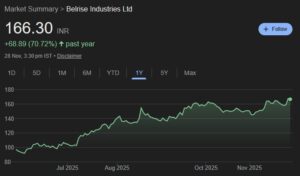

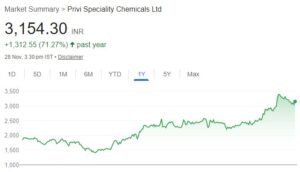
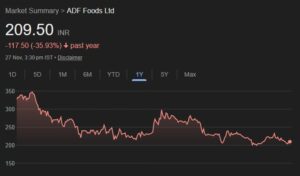
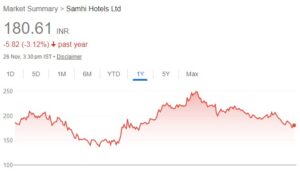
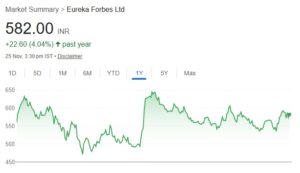
When you have own part of a company stock company pay you profits by sending you a check, it is known as dividend.
If you were to choose between a VALUE & a GROWTH stock , which would you choose and why ?
I think the question depends on your risk profile. In a “value” stock, you are looking to buy at a cheap P/E and high dividend yield in the hope that there is downside protection. In a “growth” stock, you are happy to buy at a high P/E and low dividend in the hope that the growth momentum will push the stock forward. Page Industries is a good example of a “growth” stock where investors are happy to pay a P/E of 40 times the EPS in the hope that the stock will deliver 30+ growth rate over several years. Another example is HDFC Bank.
How do you find rec Ltd at price of 163 and dividend payout of 30% and EPS of 57 Rs.
Dear Mam
I am 28 years old since i am not having a regular monthly income i have invested in brila dividend yeild and uti dividend yeild in dividend reinvestmant method. Both are one time invetment of Rs60000 each. i would like to accumulate a corpus of Rs5000000 by the time i turn 60 years i want to know weather i am in wright path.
If you invest Rs. 1.2 lakh today and you want Rs. 50 lakhs after 32 years, your investments must yield a Compound Annual Growth Rate (CAGR) of 12.36%. This will be difficult for a pure debt fund to achieve. Even today, when the interest rates are “high”, debt funds are not able to notch up more than 9-11% on an average. Instead, if you do have 32 years on your side, you are much better off investing in a diversified equity fund. These funds do give an average of 19% – 22% CAGR over a long period of time.
You can see for yourself that a small change in the CAGR makes a huge difference to your returns.
If you invest Rs. 1.2 lakhs in an investment giving a CAGR of 12.36%, the redemption amount becomes Rs. 50 lakhs in 32 years.
If the CAGR is 15%, the redemption amount becomes Rs. 1.05 crore in 32 years.
If the CAGR is 19%, the redemption amount becomes Rs. 3.13 crore in 32 years.
If the CAGR is 20%, the redemption amount becomes Rs. 4.10 crore in 32 years.
That’s the magic of compounding. You check for yourself here:
http://www.moneycontrol.com/personal-finance/tools/magic-of-compounding-tool.html
Hi,
The below example says,
VST Industries is an exception to this rule, having given a fabulous return of 2,528% since 1.1.2000 (market price than was Rs. 65 and today it is Rs. 1,730)
However, If I use CAGR Formula, the return is 28.71%. though this percetange is not matching with 2528% !, how this is calculated ?
Thanks
Vijay
Sir, the CAGR works out to 31.45%. You can check that here http://www.investopedia.com/calculator/cagr.aspx and back-test it here http://www.moneycontrol.com/personal-finance/tools/magic-of-compounding-tool.html
meenakshiji GM i am short term invester .can you give good adviser co.
& i work start [OPTION TRADING] give best advice.
Rakesh Zunzunwala’s dividend stocks ?
And
Why Zunzunwala not invested in front line stocks for example Reliance,HDFC , LT, TCS, Infosys, SBI, Wipro, etc
Please answer
Ramesh Chintawar